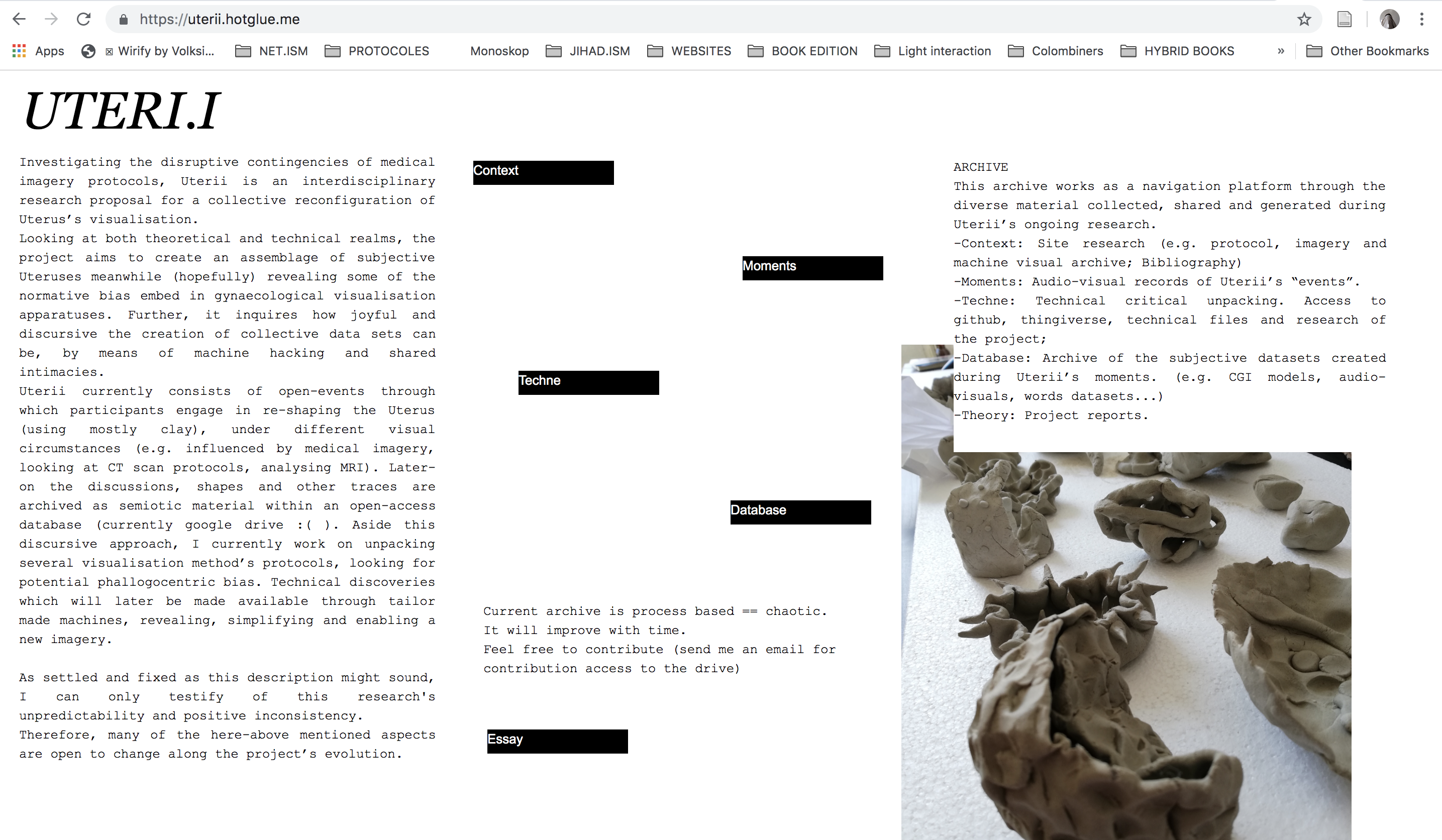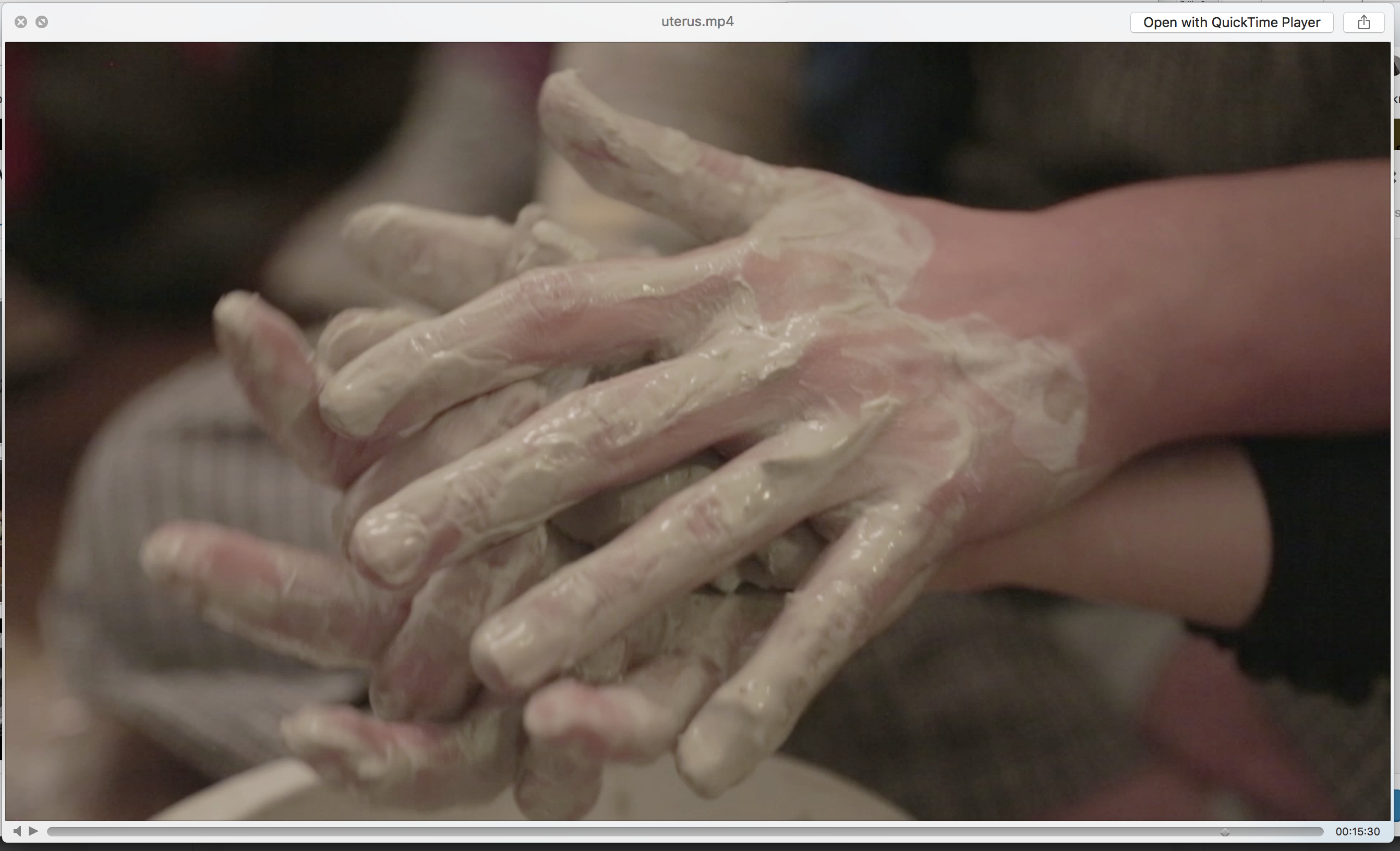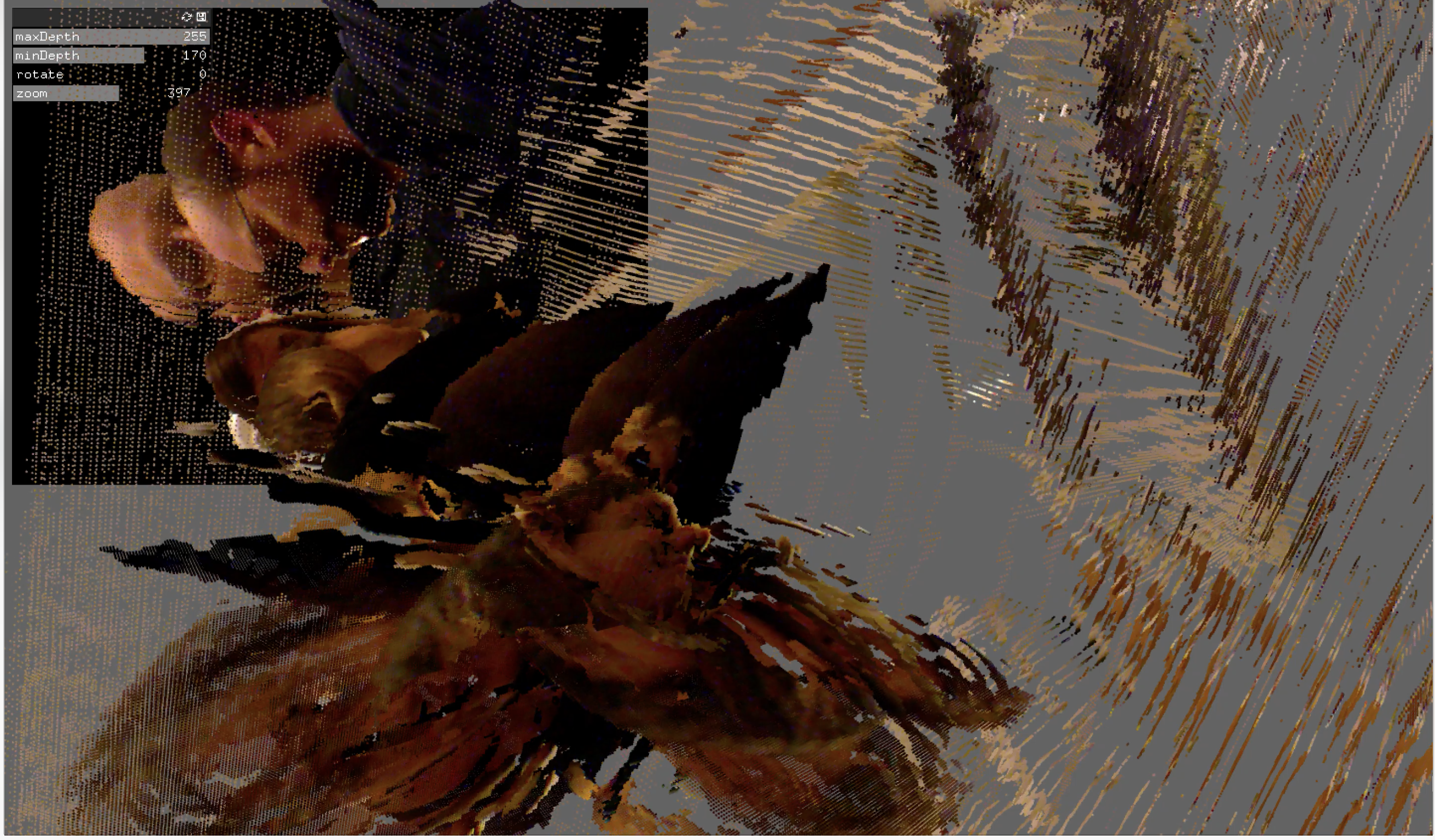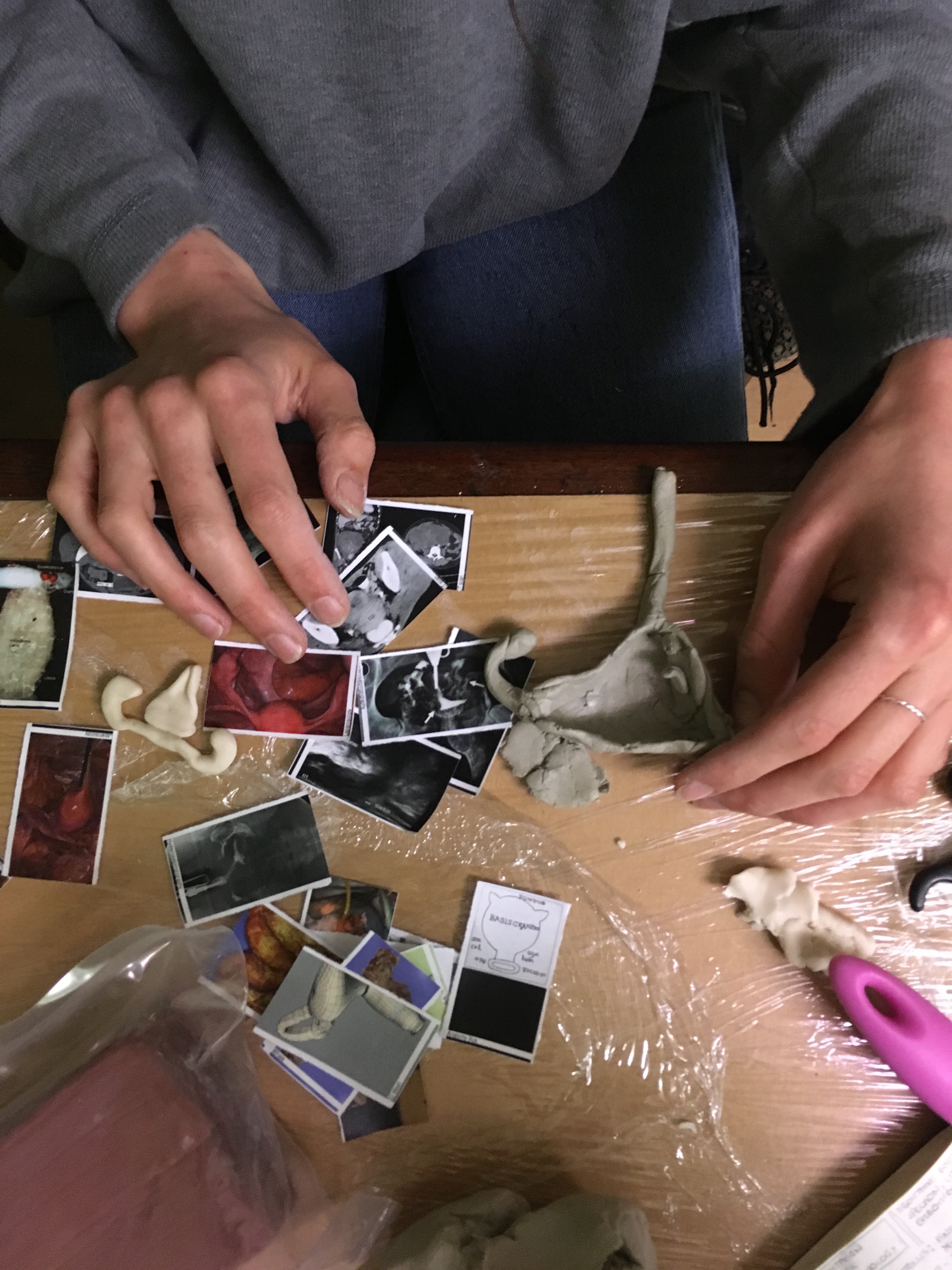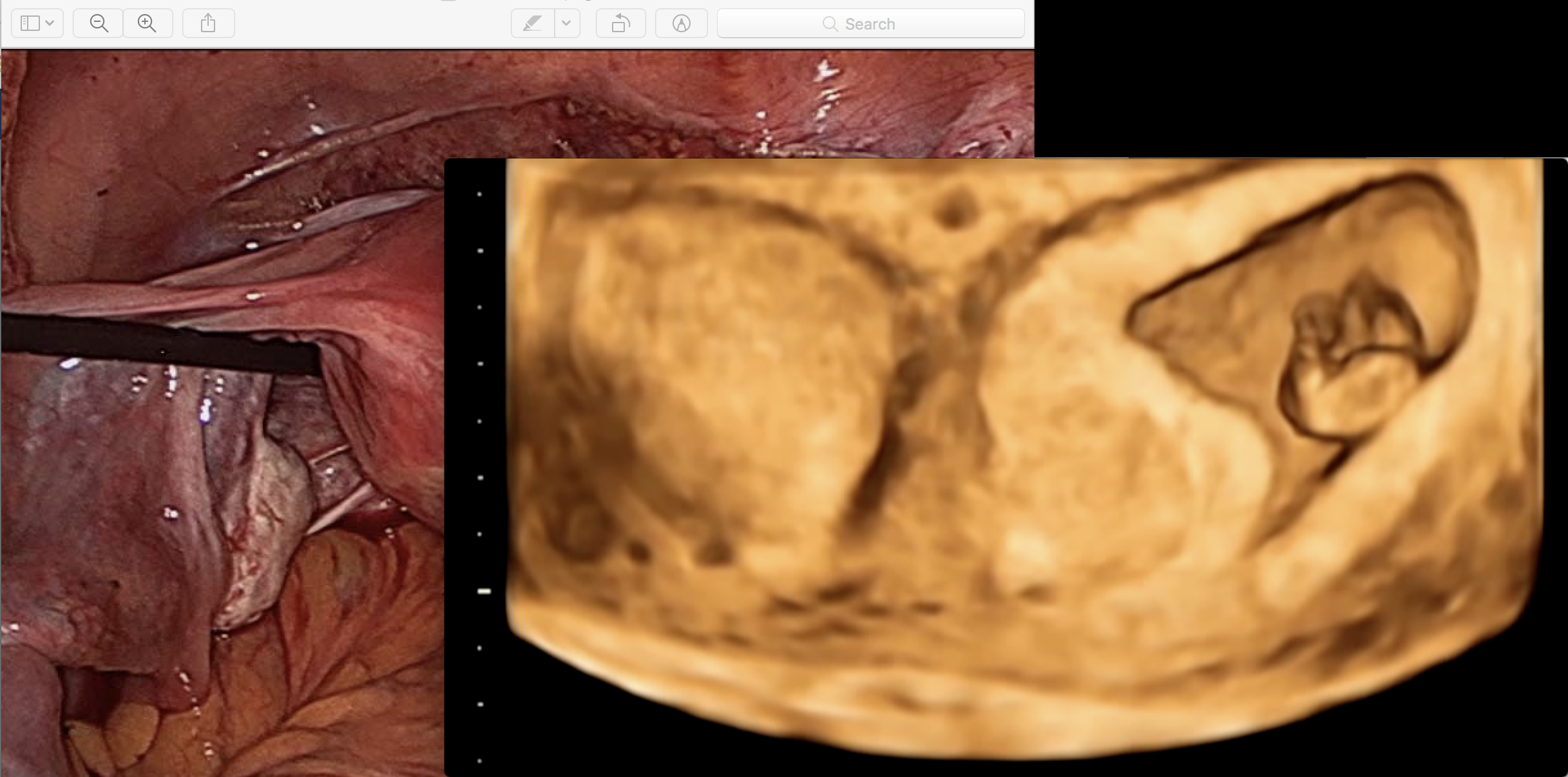Uterii
Toward a collective reconfiguration of uteri imagery across human-machine interactions.
Email me for the full length paper: jpepi001@gold.ac.uk
Abstract
Uterii is an artistic research questioning the gynecological gaze, its clinical historicity and diverse agencies. The project currently amounts to series of events supplemented by custom-built machines for experimental research around uterus visualization. The project’s resources, process, artefacts and technical files are accessible online, via a digital archive (www.uterii.hotglue.me) and offline, throughout public interventions. This paper unpacks the distinct layers constitutive of the project thru looking at its critical context, its aim and motivation beside a reflection on its past, present and future elaboration.
I began this project with the intention to unpack, reveal and reconfigure uteri gynecological visualization by means of human-machine interactions informed by Lucy Suchman theories on human-machine reconfiguration[i]. Further, Uterii methodology involves an active participatory process subsequently unfixing its research format by way of developing through practice. This report is testament to this troubled process and the ambiguities which emerged along the course of collective uteri harvesting, reshaping, assembling and compounding.
Concerned with the re-enactment of phallogocentric discriminations within uterus imagery, I seek, though Uterii, for a reconfiguration of the gynecological imagining apparatus as a form of resistance. Operating on the assumption that gynecological vision prioritizes sight as most efficient sense to gain knowledge, the project argues that seeing uteri as objects of knowledge discriminates their embodied existence meanwhile perpetuating normative discourses on gender and singularity. Influenced by Donna Haraway’s theories on site situated knowledge[ii], I refer to her definition of embodied knowledge as to the idea that knowledge finds its source within the post-anthropocentric body (e.g. human, non-human, organic, mechanic), its location, relationality and historicity. Informed by a technical and critical study of CT scanning[1], laparoscopy[2] and ultrasonography'[3]s image acquisition protocols and through my techno-artistic practice, the project draws attention to the processes by which the female body comes into being as an object of gynecological knowledge. Positioned at the intersection of feminist practice, medical informatics criticism and human-machine reconfiguration (Suchman), this research raises questions about the relationship between the female body and the clinical gaze as they meet at the interface. Notably, Uterii aims to unpack and reflect upon possible bias embedded in image acquisition protocols and what they reveal about obstetric rhetoric. As a matter of scale, the project looks concurrently at computer vision algorithms and the machines through which they operate. (E.g. Gray scaling[4] and thresholding[5] in CT scanning).
Within this theoretical framework, and across its format and methodology, Uterii consists of collective reflections and translations (E.g. events, writings, machine prototypes, codes, drawings and shapes) gathered and shared, online and offline, through an archive[7] and experimental laboratory. As unfixed as my practice (from design to education, curation and currently artistic computation), the project leakages through different academical fields. Embracing the idea of semi-expert knowledge (Haraway), the research relays on endless webs of intertwined discussions among various practitioners, non-practitioners, expert and non. By means of collective encounters, feminist discussions and creative practices, the research explores alternative ways to enact criticism through embodied research, sentient interaction and image modelling. Besides, Uterii’s experimental approach enquires the ambiguities and difficulties of thinking methodologies to form pluri-disciplinary projects within the constrain of academical mono-disciplinary and its neoliberal duration. Luckily, Uterii finds its strength amid the practice of other multidisciplinary artists scholars, such as SubRosa[8], whose practice insists on the necessity to engage across fields to create relevant projects.
Footnotes
[1] A CT scan as defined by Oxford dictionary is “An X-ray image made using a form of tomography in which a computer controls the motion of the X-ray source and detectors, processes the data, and produces the image. Also called CAT scan” (Oxford living dictionary, 2019)
[2] A laparoscopy as defined by Oxford dictionary is “A surgical procedure in which a fibre-optic instrument is inserted through the abdominal wall to view the organs in the abdomen or permit small-scale surgery.” (Oxford living dictionary, 2019)
[3] Ultrasonography as defined by Oxford dictionary is “A technique using echoes of ultrasound pulses to delineate objects or areas of different density in the body.” (Oxford living dictionary, 2019)
[4] A grayscale, in computing term, as defined by Oxford dictionary is “ A range of grey shades from white to black, as used in a monochrome display or printout.” (Oxford living dictionary, 2019)
[5] A threshold value, in computing terms, as defined by McGraw-Hill Dictionary of Scientific & Technical Terms is “A point beyond which there is a change in the manner a program executes;” (McGraw-Hill Dictionary of Scientific & Technical Terms, 6E, Copyright © 2003). Further, in image acquisition protocols it is the value set to define the area of interest to be stored.
[7] www.uterii.hotglue.me
[8] subRosa. “Bodies Unlimited A Decade of SubRosa’s Art Practice.” N. Paradoxa, vol. 28, p. 10.
Annotated bibliography
[1] Suchman, Lucille Alice. Human-Machine Reconfigurations. 2nd ed.., Cambridge University Press, 2007. Lucille Suchman theories on human-machine reconfigurations are of great interest for Uterii project in that they propose a good theoretical framework to understand the role machine can play in that of reconfiguring the human.
[1] Haraway, Donna. “Situated Knowledges: The Science Question in Feminism and the Privilege of Partial Perspective.” Feminist Studies, vol. 14, no. 3, 1988, pp. 575–599. Donna Haraway piece on feminist objectivity and site situated knowledge is of great influence for Uterii project in that it formulates a theoretical methodology through which I could build my research.
[1] Varela, Francisco. “Intimate Distances: Fragments for a Phenomenology of Organ Transplantation.” Journal of Consciousness Studies, vol. 8, 2001, pp. 259–71. Francisco Varela was the first text I read which led me to initiate Uterii. Indeed from both theoretical and literary perspective, his testament of liver transplant made me realize of the phenomenological power clinical image could entails and the potentiality of their reconfiguration.
Bibliography
Berlant, Lauren. “The Commons: Infrastructures for Troubling Times.” Environment and Planning D: Society and Space, vol. 34, no. 3, 2016, pp. 393–419.
Cahill, Caitlin, et al. “‘Dreaming of . . .’: Reflections on Participatory Action Research as a Feminist Praxis of Critical Hope.” Affilia, vol. 25, no. 4, 2010, pp. 406–416.
Cartwright, Lisa. Screening the Body : Tracing Medicine’s Visual Culture. University of Minnesota Press, 1995.
Cuboniks, Laboria. Laboria Cuboniks | Xenofeminism. https://www.laboriacuboniks.net/. Accessed 12 May 2019.
Éguavoen, Sonia. Femme et lesbienne : quels enjeux ? Vers une pratique inclusive en consultation gynécologique. July 2015. dumas.ccsd.cnrs.fr, https://dumas.ccsd.cnrs.fr/dumas-01228998.
Foucault, Michel. The Birth of the Clinic. An Archaeology of Medical Perception. Tavistock Publications, vol. 19, 1973.
Gajjala, R., and L. Oh. Cyberfeminism 2.0. Peter Lang, 2012.
Haraway, Donna. “Situated Knowledges: The Science Question in Feminism and the Privilege of Partial Perspective.” Feminist Studies, vol. 14, no. 3, 1988, pp. 575–599.
Hockey, Jenny, and Janet Draper. “Beyond the Womb and the Tomb: Identity, (Dis)Embodiment and the Life Course.” Body & Society, vol. 11, no. 2, 2005, pp. 41–57.
Jones, Meredith. “Expressive Surfaces: The Case of the Designer Vagina.” Theory, Culture & Society, vol. 34, no. 7–8, 2017, pp. 29–50.
Kroløkke, Charlotte H. “On a Trip to the Womb: Biotourist Metaphors in Fetal Ultrasound Imaging.” Women’s Studies in Communication, vol. 33, no. 2, 2010, pp. 138–153.
Malatino, Hilary. “BIOHACKING GENDER: Cyborgs, Coloniality, and the Pharmacopornographic Era.” Angelaki, vol. 22, no. 2, 2017, pp. 179–190.
Marshall, Barbara. “‘The Nature Of The Body’: Anatomizing Heterogender In Sexual Medicine.” Resources for Feminist Research/Documentation Sur La Recherche Feministe, vol. 33, no. 3–4, 2008, pp. 17–30.
MedeaTV. Lucy Suchman: Restoring Information’s Body - Remediations at the Human-Machine Interface. YouTube, https://www.youtube.com/watch?v=Z3I-ndAXYWg&t=1567s. Accessed 12 May 2019.
Museum of Arts and Design (MAD). Silvia Federici: Women, Reproduction, and the Construction of Commons. YouTube, https://www.youtube.com/watch?v=Z3I-ndAXYWg&t=1567s. Accessed 12 May 2019.
Palmer, Julie. “Seeing and Knowing: Ultrasound Images in the Contemporary Abortion Debate.” Feminist Theory, vol. 10, no. 2, 2009, pp. 173–189.
---. “The Placental Body in 4D: Everyday Practices of Non-Diagnostic Sonography.” Feminist Review, vol. 93, no. 93, 2009, pp. 64–80.
Plant, Sadie. “On the Matrix: Cyberfeminist Simulations.” The Cybercultures Reader, Eds David Bell and Barbara M. Kennedy, Routledge, 2000, p. pp.325-326.
Prentice, Rachel. “The Anatomy of a Surgical Simulation: The Mutual Articulation of Bodies in and through the Machine.” Social Studies of Science, vol. 35, no. 6, 2005, pp. 837–866.
Rinon, Yoav. “The Rhetoric of Jacques Derrida I: Plato’s Pharmacy.” The Review of Metaphysics, vol. 46, no. 2, 1992, pp. 369–86. JSTOR.
Shohat, Ella. “‘Lasers for Ladies’: Endo Discourse and the Inscriptions of Science.” Camera Obscura, no. 29, 1992, pp. 56–89.
Starrett, Courtney, et al. “Data Materialization: A Hybrid Process of Crafting a Teapot.” Leonardo, vol. 51, no. 4, pp. 381–385.
subRosa. “Bodies Unlimited A Decade of SubRosa’s Art Practice.” N. Paradoxa, vol. 28, p. 10.
Suchman, Lucille Alice. Human-Machine Reconfigurations. 2nd ed.., Cambridge University Press, 2007.
Varela, Francisco. “Intimate Distances: Fragments for a Phenomenology of Organ Transplantation.” Journal of Consciousness Studies, vol. 8, 2001, pp. 259–71.
Visual bibliography
Caroussel 1: Archive of Uterri platform, events, shapes and technological research.
Caroussel 2: Archive of Uterii visual research into laparoscopy, transvaginal ultrasound, 4D ultrasound, Ct-scan and visual experimentations involving machine vision.
Image header: Uterii collage (nb: screenshots are used thourghout the project as means to visualy translate the research).

































































